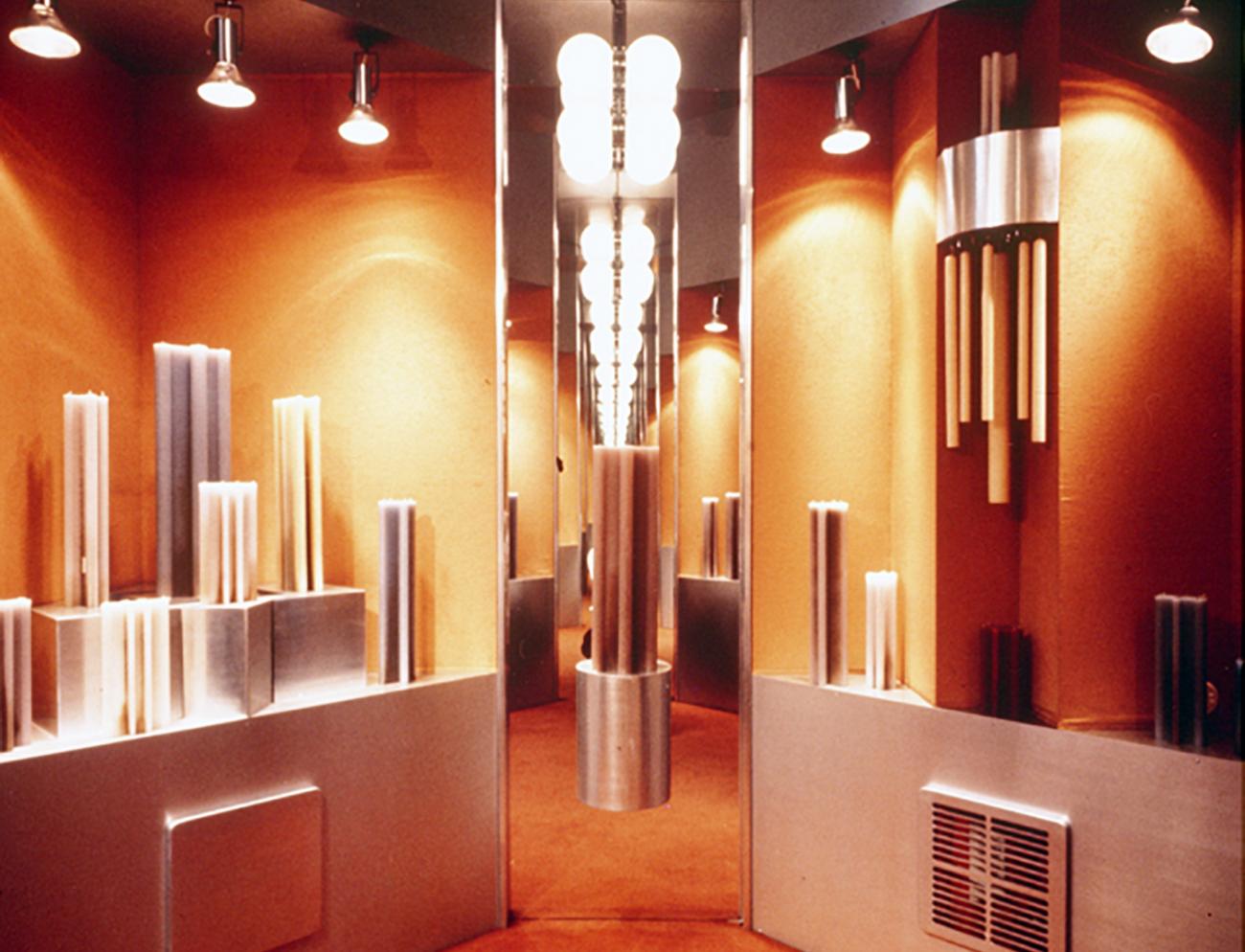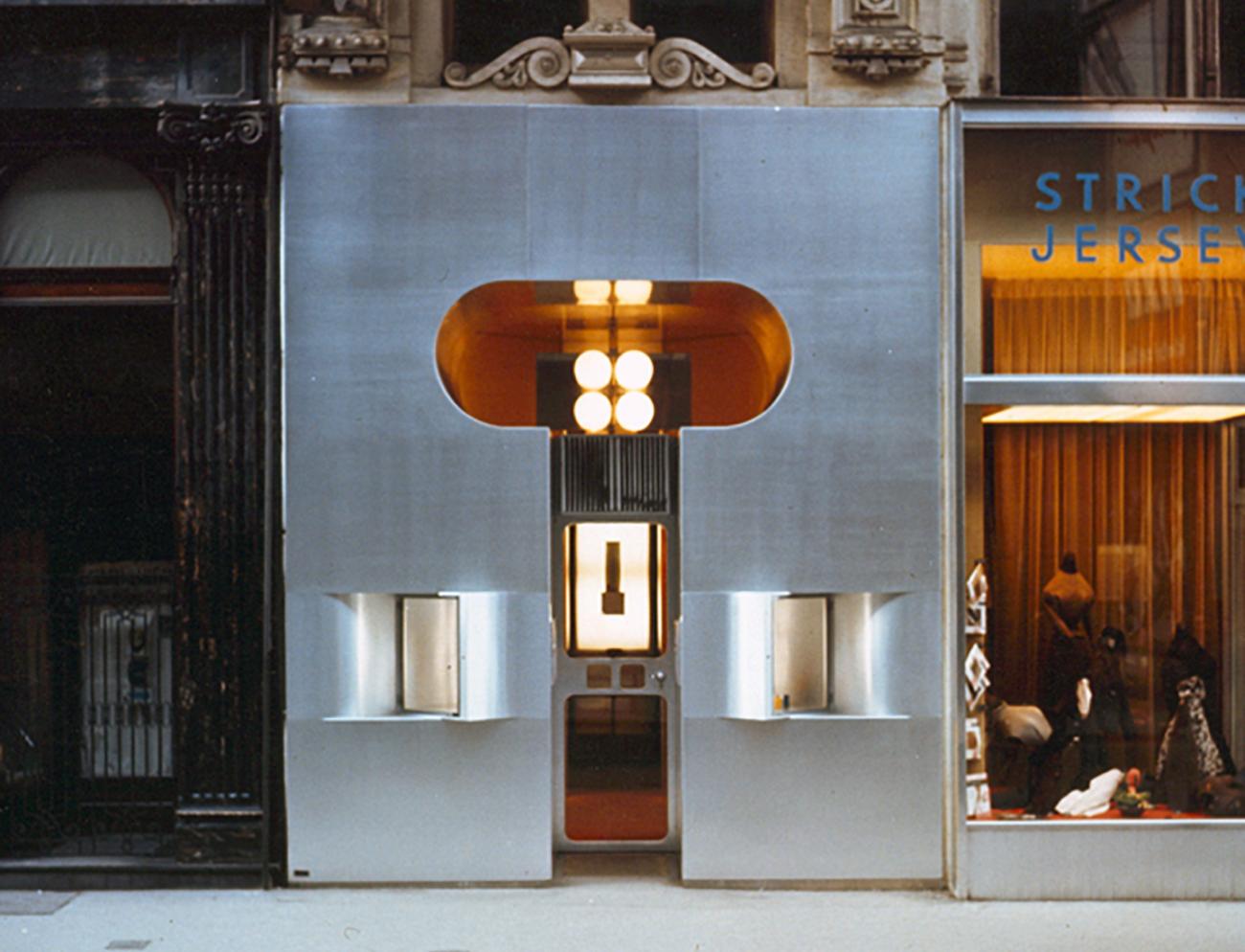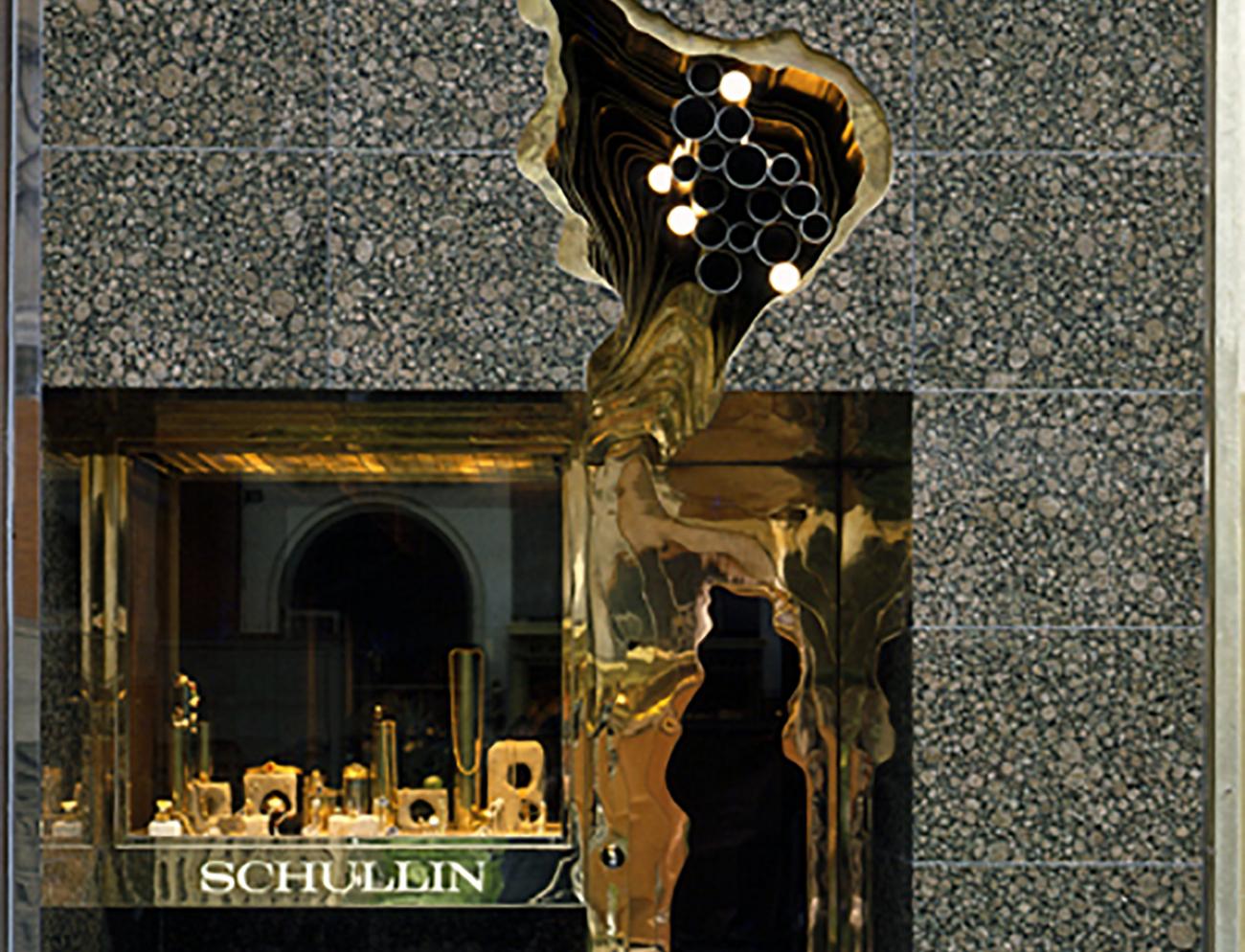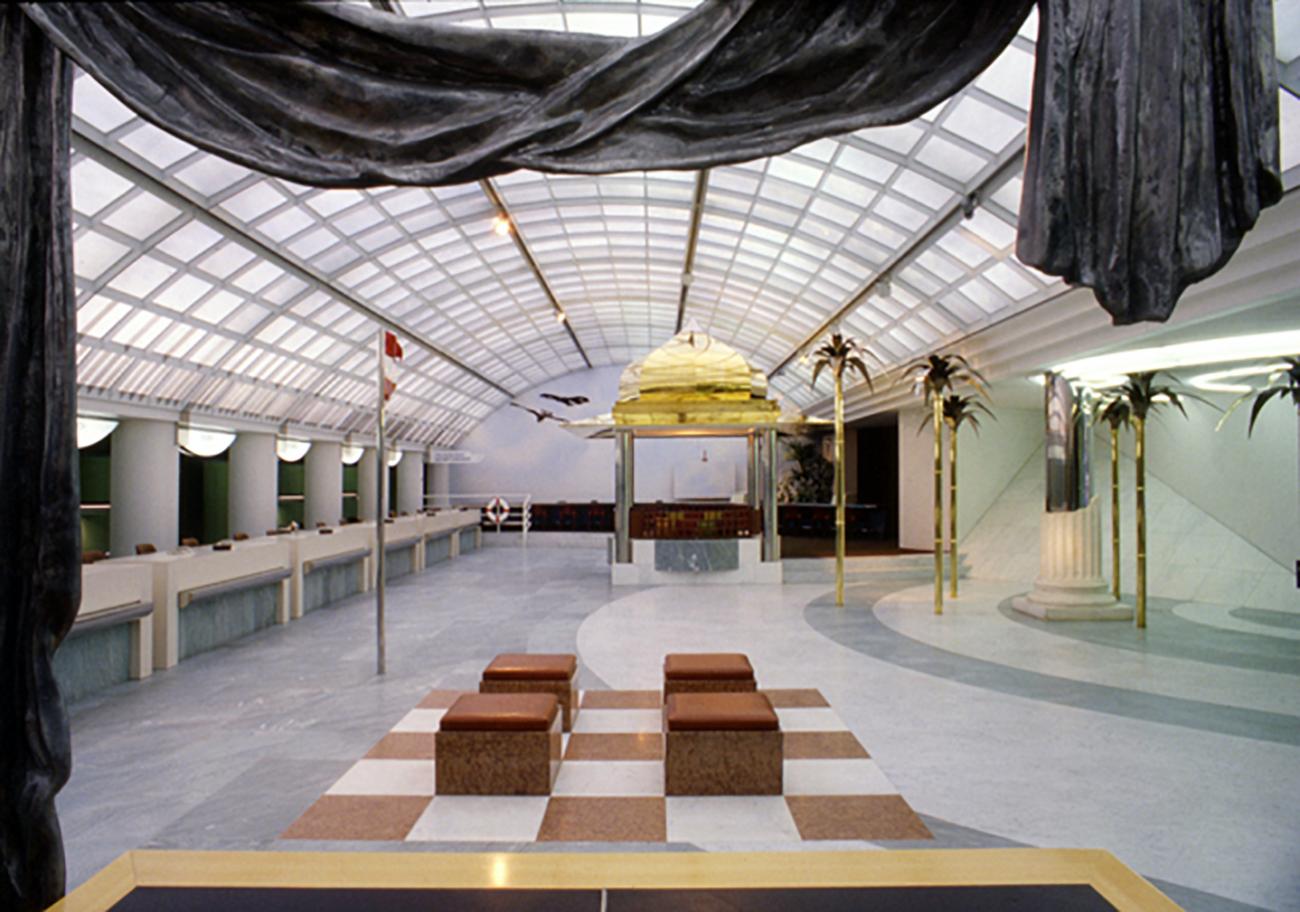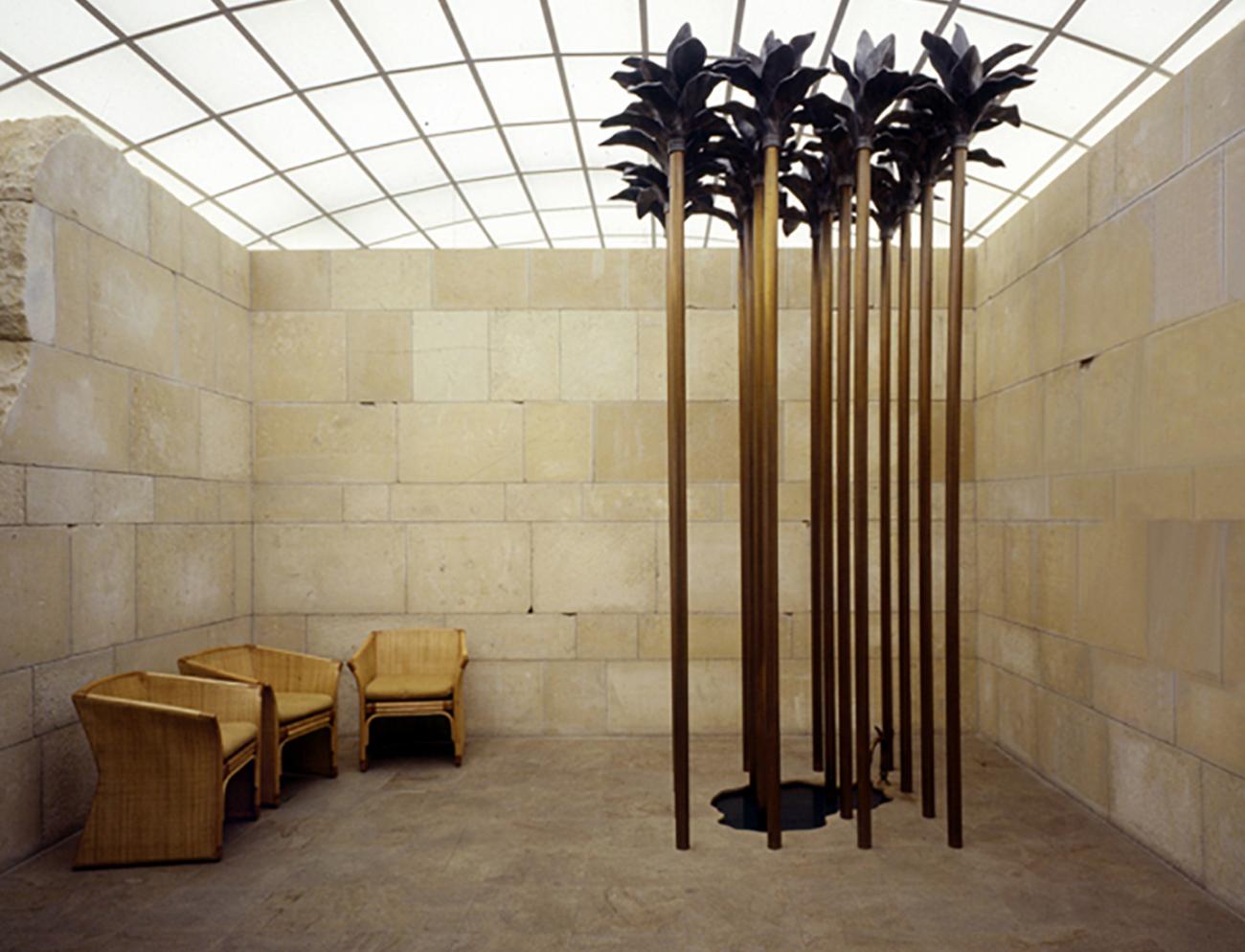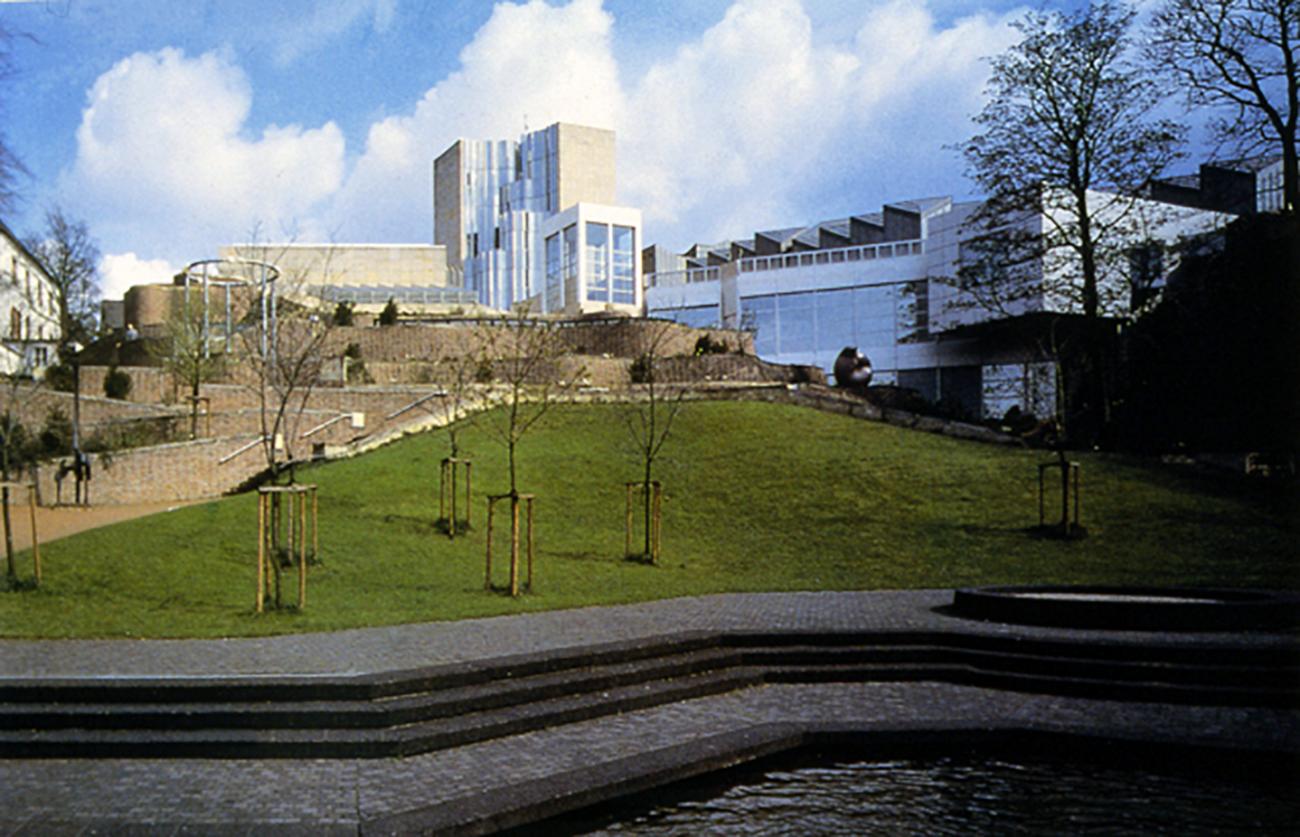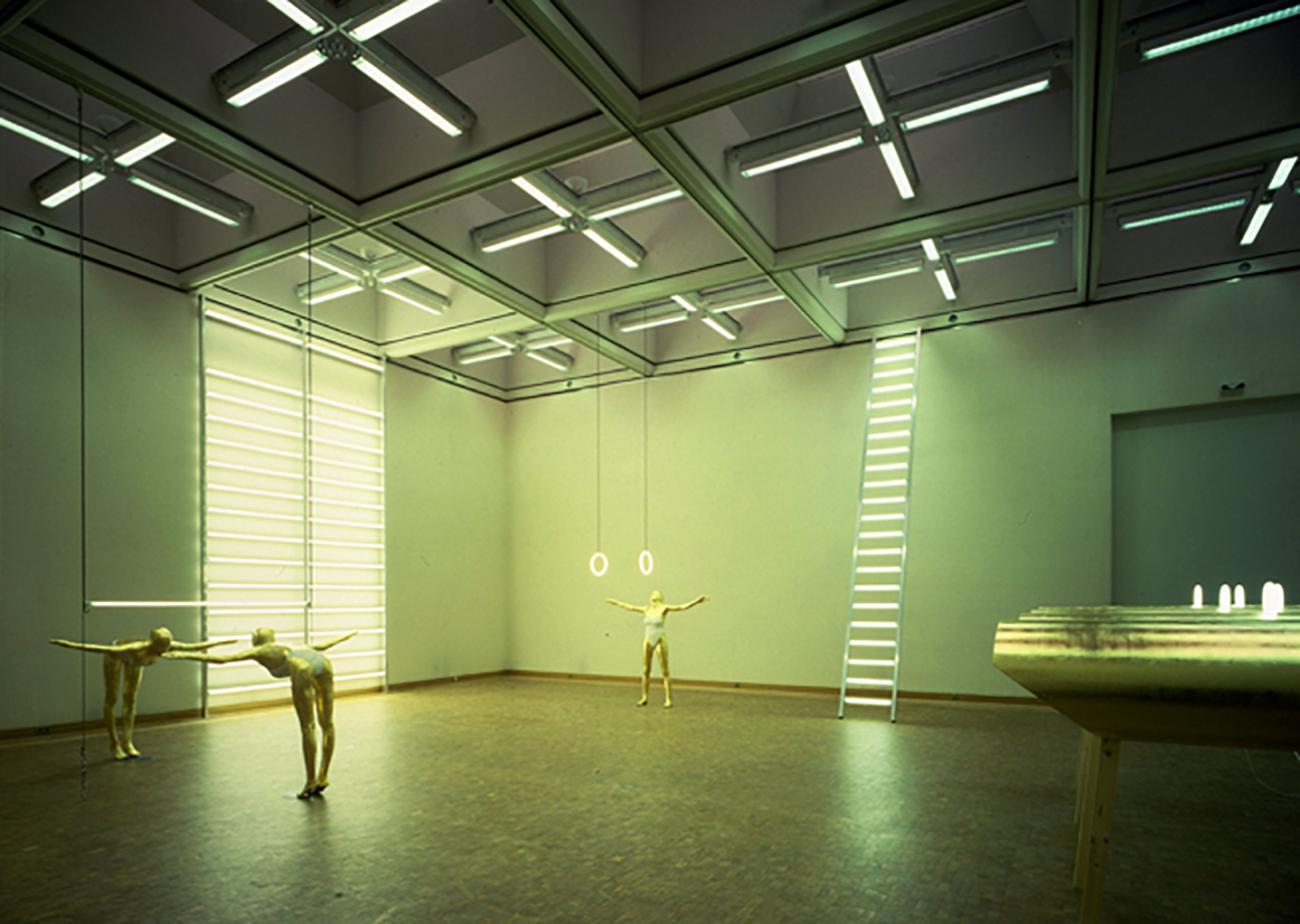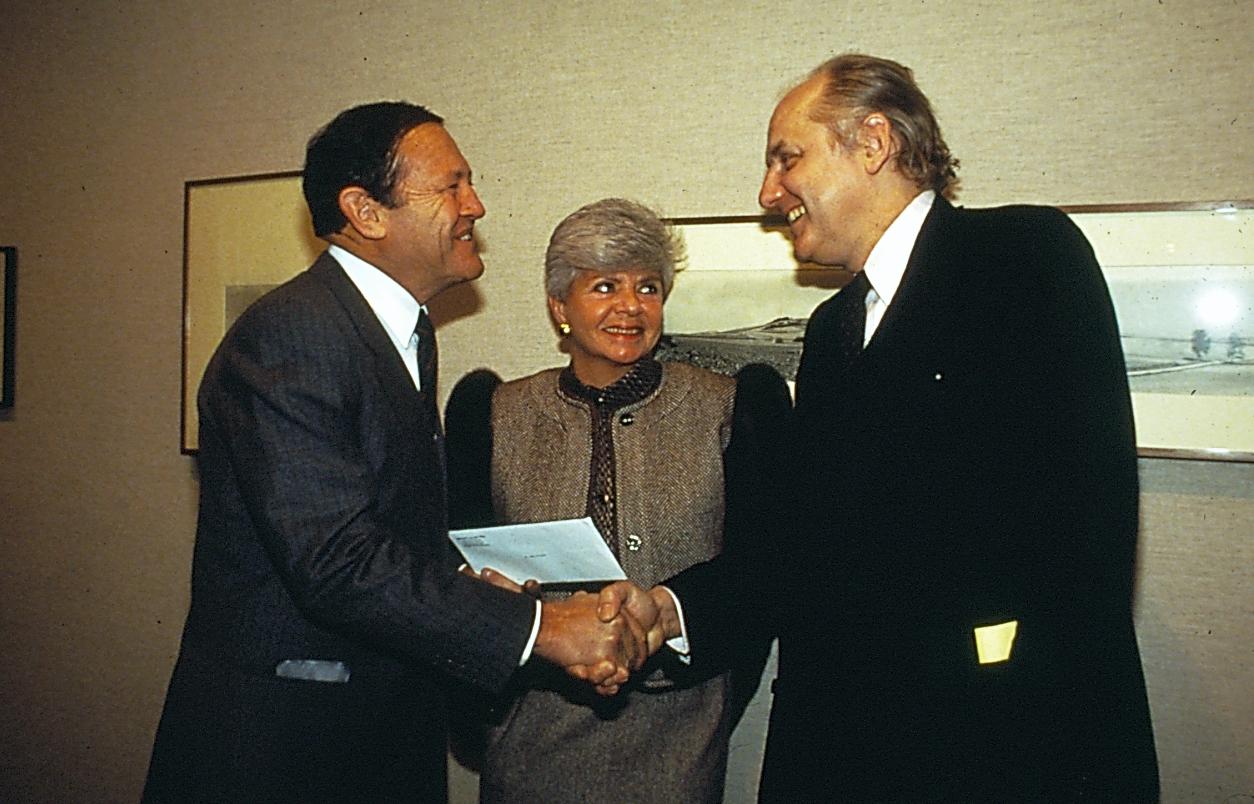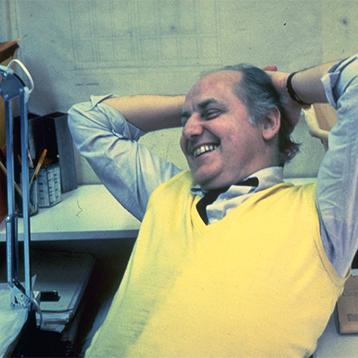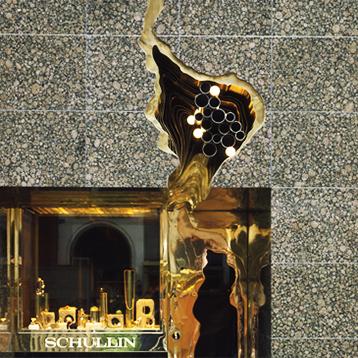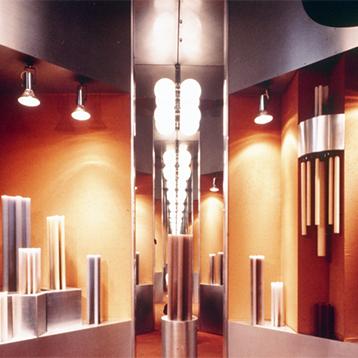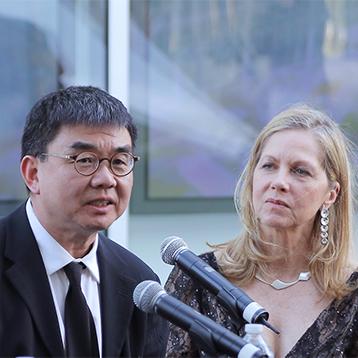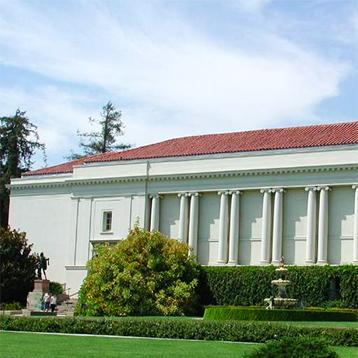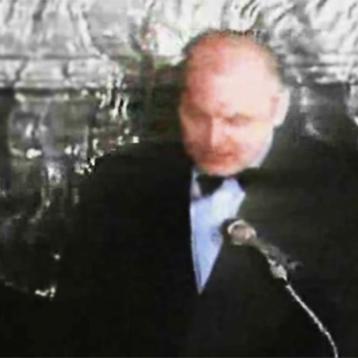Hans Hollein was born in Vienna, Austria in 1934. From his earliest school days, he manifested a talent for drawing. Although he chose architecture as his profession, his works of art are in many public and private collections around the world.
He has been described as far more than an architect—artist, teacher, author, and a designer of furniture and silverware. He graduated from the Academy of Fine Arts, School of Architecture, in Vienna in 1956. He was awarded a Harkness Fellowship which afforded him the opportunity travel in the United States. He undertook graduate work at the Illinois Institute of Technology in Chicago, and completed his Master of Architecture degree at the University of California, Berkeley in 1960. During those same years, he was able to meet and study with some of the architects he most admired, including Mies van der Rohe, Frank Lloyd Wright and Richard Neutra.
It is characteristic of his curiosity and humor that when he learned there are seven towns or cities in the United States, all bearing the name, "Vienna," he took the time to visit all of them. This was while touring the country in a second-hand Chevrolet.
After working in architectural firms in Sweden and the United States, he settled in Vienna where his first commission in 1965 was what Architectural Forum magazine described as "even smaller than most first commissions: a shop and showroom 12 feet wide for a candle maker." They added however that "it brought him an enthusiastic client and a prominent location on a fashionable Vienna street."
Known as the Retti Candleshop, Hollein's accomplishment of this minor commission brought him international attention, including the $25,000 Reynolds Memorial Award. It was the first time in a decade that the award had gone to a work that cost less than the prize.
